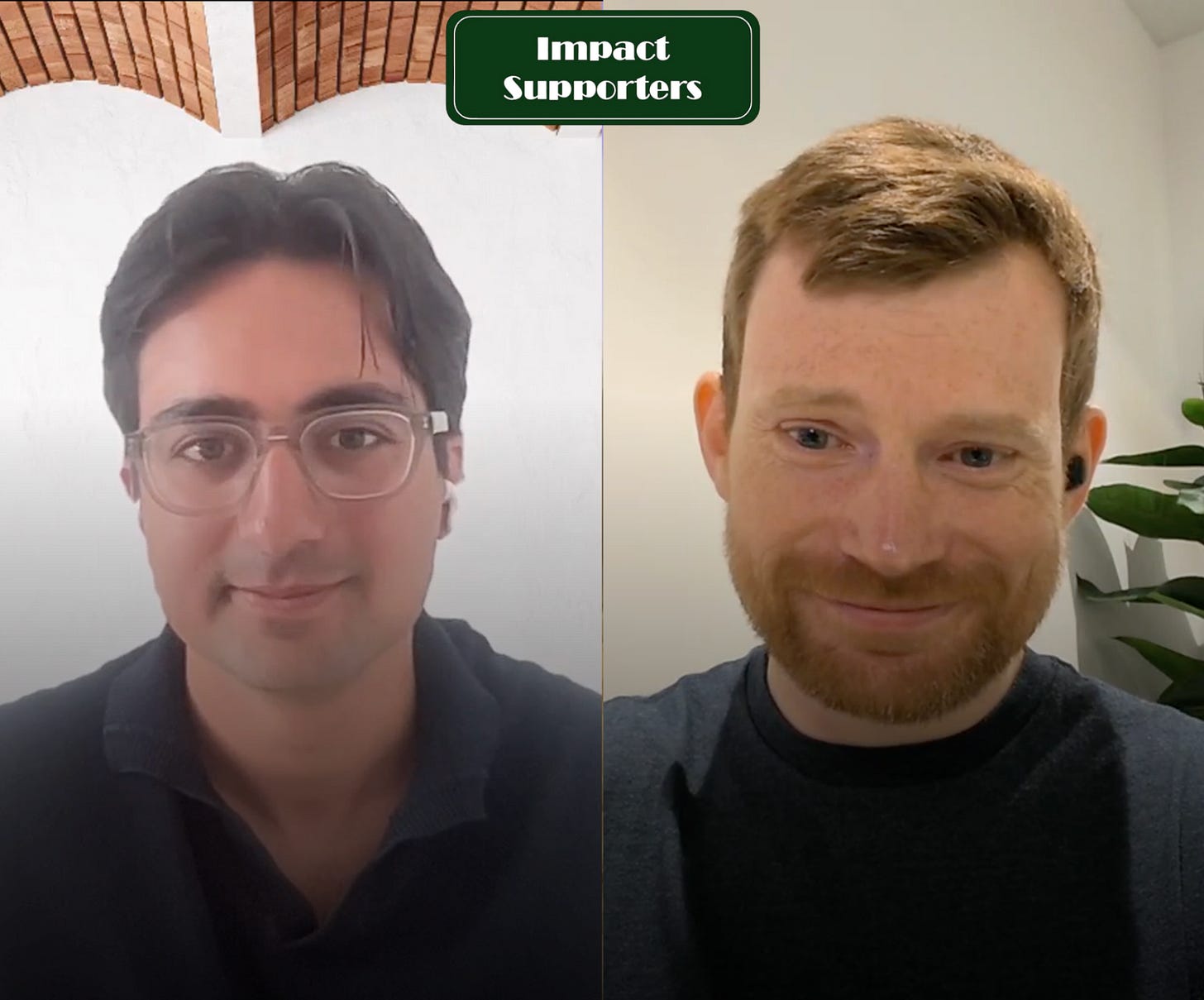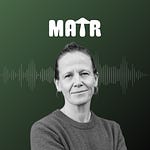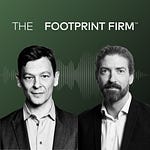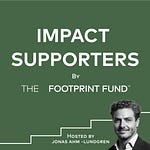Greetings to 3k+ Impact Supporters! 🌍 It’s August Solliv 👋 Today’s article and podcast are part of The Impact Highlight Series - a podcast series that I run with EUVC (Andreas Munk Holm) and ImpactVC/Better Society Capital (Douglas Sloan & Ellie Broad).
Over the past months, we’ve hosted ten conversations with some of the most thoughtful GPs, LPs, and unicorn founders shaping the impact investing landscape. In this special capstone episode, August Solliv (Impact Supporters) and Dougie Sloan (Impact VC & Better Society Capital) sit down to unpack what we’ve heard and distil the lessons into four big themes.
Agenda:
Impact Driving Returns
What makes a great fund
Getting more LP capital to impact VCs
It comes back to people
Here are our notes for the episode:
‘Impact driving returns’
Advantages of building in impact (founder)
Everybody (Niklas + Tony + Fabian + Emma & Emily) says you recruit better talent, have more engaged employees, and work better together
Emma and Emily: Not all models are impact VC material - Where the social inequality is created or exacerbated by a market failure that can be solved through tech this is the sweet spot where you can truly tackle inequality with venture
Emma and Emily: You need a lockstep model - especially on the social side
Embed impact in product economics (Wagestream/Ascension): Design models where better user outcomes = higher revenues.
Emma and Emily: great VC-startup relationship wanting to help each other - they care equally about the impact mission as well
Tony: the pain becomes meaningful
How VC’s see that dynamic
Shared Value - collinearity, not compromise (Jon Coker, Eka Ventures): The most resilient companies scale profit becauset hey scale impact. Mutual reinforcement, not tradeoffs. Companies backed by impact-driven funds tend to grow faster because they address real systemic needs (e.g., health, sustainability), creating deeper, stickier revenue.
De-risking effect (Christian/2150): Impact-native businesses benefit from tailwinds (policy support, regulatory push, consumer preference), which lowers downside risk and increases durability. Impact alignment is not just “feel-good”- it’s strategic de-risking.
LP lens on data
Caveats (vintages, unrealised, lumpy, different ‘impact definitions’)
Cyril – correlation
Chloe – similar
BSC data
‘What makes a great fund’
LP lens on fund selection - ‘great from good’
Cyril:
Cyril: Great funds have partner-level superpowers across both traditional finance and deep impact expertise. Good funds often only have “bolt-on” ESG advisors or junior staff.
Cyril: Great funds back companies where impact metrics are inseparable from how the company makes money. Good funds often track external or cosmetic metrics.
Chloe
Chloe: GP-thesis fit - You’re either raising off the back of experience and therefore track record, or if not you’re raising off of a unique market view, typically developed through academic specialism, or some sort of unique career experience. It always comes down to GP thesis fit - why has this team got an advantage on executing on this strategy?
Chloe: Important to remember that we diligence impact funds the same way as traditional VC funds
Jacquline van den Ende
Jacqueline: The fund truly has value add in supporting their portfolio companies. A good example is the Energy Impact Partners Frontier fund. They are backed by utilities and energy companies and offer a great network for commercial and strategic partnerships.
Jacqueline: it can also be through the fund’s role in the ecosystem, e.g. Contrarian and Voyager that have a superior co-investment network
How VCs are setting themselves up for success – incl. generalist/specialist Q
Specialism and GP/thesis fit:
Chloe: GP-thesis fit and unique knowledge and market access is easier to prove with specializations like biotech and climatetech but generalist funds are also interesting
Jon + Fabian: you need to understand specific themes to invest well
Fabian (+ counts for Christian as well): AENU is thesis-driven and focused on Europe: they go deep into verticals like energy storage, circularity, industrial decarb.
Jon (best number in the whole series): “In fund I, 70% of the investments we made did not have a competing term sheet. So there is clearly a gap at Seed for what we do.” – ‘systems not sectors’: Define an investable theme (e.g., healthier consumption, sustainable production) and build theses around how systemic changes create opportunities.
Jon: the level of expertise we have in both venture and consumer technology is significantly different to most other funds investing in impact at seed. When coupled with a scaled fund that allows us to price and lead rounds it means that we have a very differentiated position in the market.
Looking for overlooked areas:
Jacqueline - We need to move financing to the key areas that are underfinanced - Jacqueline has done some research showing that that is FOAK plants
Christian: Impact VCs have to be agile like start-ups - How do we mobilise more VC dollars into adaptation given 94% of climate investment has gone into mitigation?
Christian: A lot of climate adaptation will look more like infrastructure than venture-backed technologies so you have to invest in different assets with new financing methods
Daily investment practice / Build firms where impact is the operating system, not a plug-in.
Impact as operating system (Fabian Heilemann, AENU): Build the entire firm around impact. Have in-house capability to track hard metrics (e.g., CO₂e abated), recruit talent with both sector and financial expertise, and ensure firm-wide alignment on sustainability. Avoid retrofitting ESG once the fund is live.
Authenticity & culture (Fabian Heilemann, AENU): Great funds “walk the talk” (e.g. their own policies, footprint, governance). Good funds focus on external optics.
Be impact-native (AENU): Hardwire metrics, in-house expertise, and policies. Avoid retrofitting ESG.
Operational authenticity (AENU): Founders increasingly expect investors to mirror their values (sustainability, inclusivity).
‘Connecting LP capital to VCs’
Innovation on the instrument – VC and LP insights
Christian: Global climate finance flows in 2022 were ~ $1.3 trillion, much less than the average $8.3 trillion per year we expect to need through 2050. So we also need to attract the LPs
Capital sources
Cyril: Public funding is not enough
Jacqueline - We need all actors to move - democratizing impact investments will help fund some solutions and funds - that’s what they build with Carbon Equity
Structures
Cyril - Increased innovation on the financial instrument itself (August: I’m not sure this is really the solution - maybe for some)
Fabian: Standard VC structures are easier for institutional LPs.
Fabian: Belief - The VC model must evolve, but founders can’t wait—we build within constraints while pushing boundaries. The larger older funds can better challenge as they can prove DPI but they are more afraid to do it
Fabian: But we still challenge the model via: longer holding periods, carried interest tied to impact KPIs, higher transparency, cutting edge
Connection
Cyril - podcast such as this series play an important role: impact investing cannot afford to remain a cluster
‘It comes back to people’
From structure to LP selection about teams
GP/Thesis fit point (Chloe)
Team composition point (Cyril)
JVDE on impact processes and how much of that is mindset
Niklas - LPs can look for teams whose motivations come from deep personal purpose, not conventional capital cycles—e.g., founders that deliberately shift from commercial exits to ecosystem-building ventures.
Unicorn founders of tomorrow
Niklas: Commercial success is a means, not an end. The real goal for any company should be to positively impact people and the planet. Norrsken only backs companies where impact is integrated into the core of the business model, and where revenue growth is directly tied to positive outcomes.
Niklas: you need founder that bleed impact but have a commercial mindset and are hungry
Tony: Humans that are purpose driven, delivering impact only them are here to make
Tony: They are not ego driven, they consider the self as everyone and everything and are at service of the collective, and of the planet. At service of life.
Tony: They have absolute confidence in their abilities, gifts, powers, and skills and direct them in alignment of something bigger than themselves
Tony: They are able to discern the light from the darkness and are able to absolutely take sides
Tony: They lead from both the Mind and the Heart
Underwrite founder learning velocity (Eka): Speed of iteration is as critical as TAM.
That was the last episode of The Impact Highlight Series - I would love to hear what you think. Feel free to reach out per email / LinkedIn!









